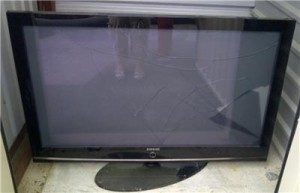Brand new household appliances can be win-win purchases, not only boosting your domestic spirits but also helping lower your annual electricity bills. A chest freezer, for example, purchased 15 years ago could be running inefficiently and adding an unnecessary chunk of money to your bill. Whether you run home entertainment systems with a large-screen TV or have a home-office with a desktop computer, you could make savings by upgrading your electrical equipment to more cost-efficient models.
If you’re considering upgrading a kitchen appliance or your computer to help save money, why not try read this useful article on cost-saving calculations from the Energy Saving Trust.
Energy ratings labels
What’s the difference between an A rated 180-litre fridge freezer and a larger 525-litre fridge freezer with a higher A+ rating? The answer: the A+ model takes more energy per year to run. When trying to save money on your energy bills, it is best to look for the product with the best energy rating for the size you require.
Money for old TVs
Your unwanted appliances could net you vouchers or discounts worth hundreds of pounds, reports The Telegraph. This new idea may be adopted by the likes of Sainsbury’s, Argos and B&Q, and would offer householders the chance to upgrade to more cost-effective fridges, washing machines and TVs for example, while trading back any unwanted goods.
Founders, Wrap, said: “Consumers could get money for a product they no longer want. Someone who can’t normally afford a product or particular brand can now do so from a reputable source.”
In the meantime, if you are buying new electrical appliances, retailers are obliged by law to either take your old appliances away, for free, in store or tell you where you can take your old item for recycling free of charge.
Brand new is best
Running a cost-efficient home often revolves around the kitchen, so it pays to pay close attention to energy ratings when you buy a new cooker, fridge or microwave. Ovens that have an A energy rating are considered most efficient of all, with a new A+ rated electric oven using 40 per cent less energy than a B rated oven.
Fridges, freezers and fridge-freezers run around the clock, making energy-efficiency vital.
Replacing an old model with a new A+ fridge freezer could save you about £60 in energy bills over the lifetime of the product. Meanwhile the Daily Mail reported that the Keenan family run a vintage 1950s TV, fridge and gas oven – annual energy costs unknown!
10 per cent of your bill
If home entertainment is important to you, it pays to know the energy implications involved and where you can make savings. The average home is thought to spend 10 per cent of its electricity bill on sound and vision, with digital radios less power-hungry than analogue radios. The larger a TV is the more energy it will consume, regardless of its energy rating. As many homes now have HD TV and most televisions on the market are HD ready, it’s prudent to remember that HD TVs have more pixels per square inch of screen area and therefore tend to consume more energy than SD (Standard Density) televisions.